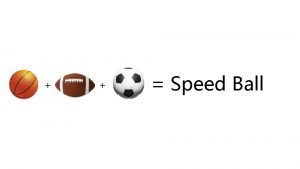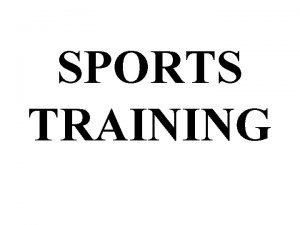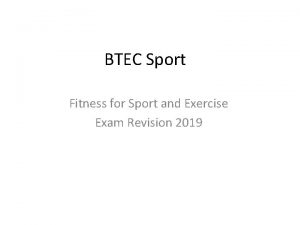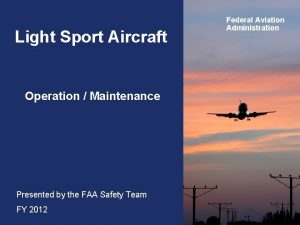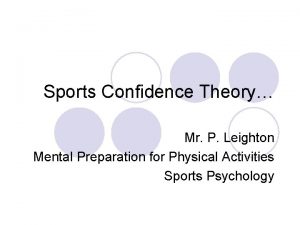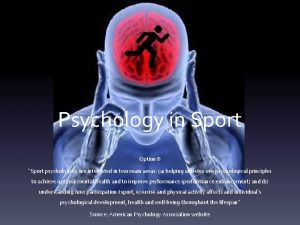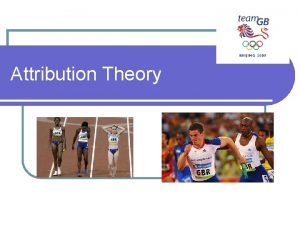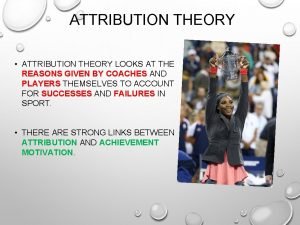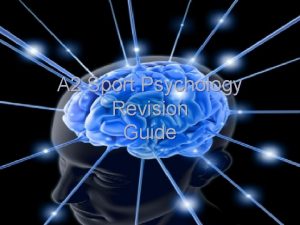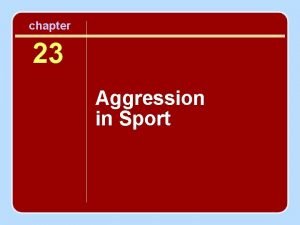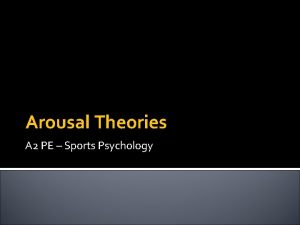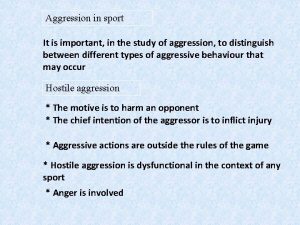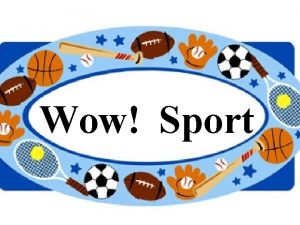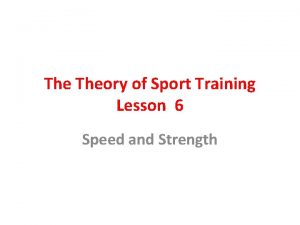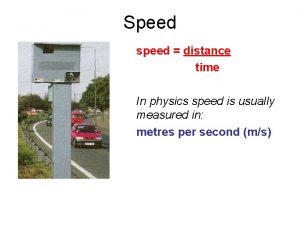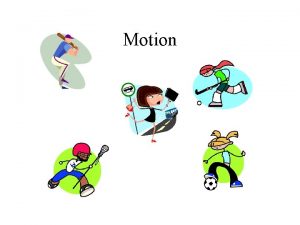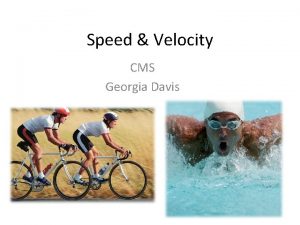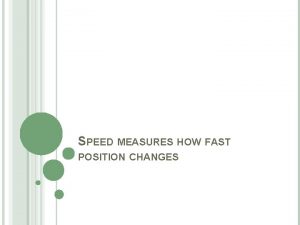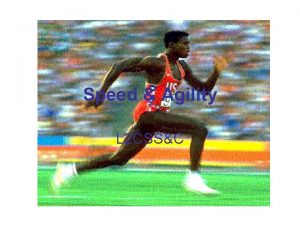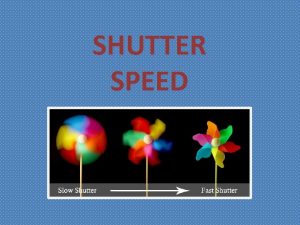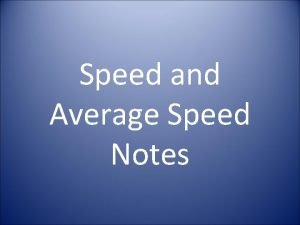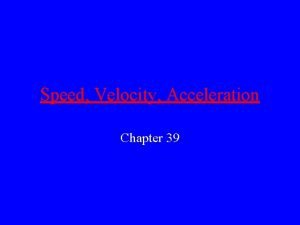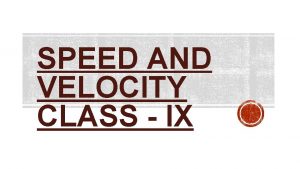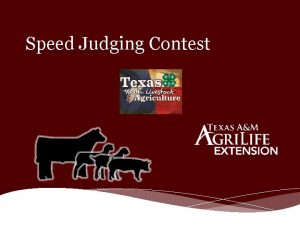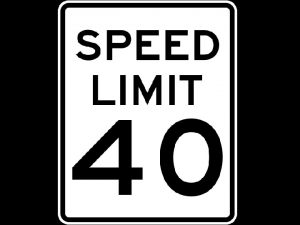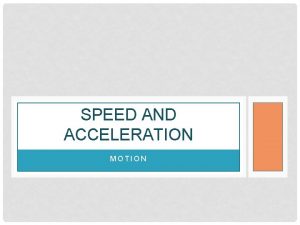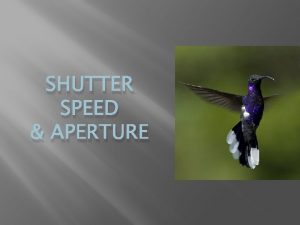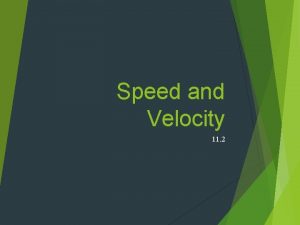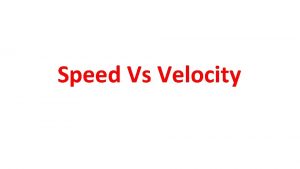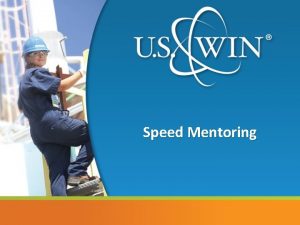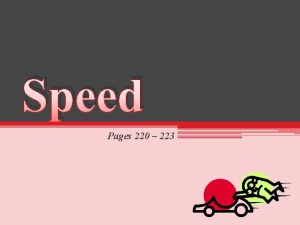The Theory of Sport Training Lesson 6 Speed























- Slides: 23

The Theory of Sport Training Lesson 6 Speed and Strength

Strength • It is the strength ability … • The tasks of strength training: - general bodybuilding, stabilize the muscle apparatus for well-being, health, fitness - injury prevention and rehabilitation - cosmetic training – visage, appearance - development of performance for competitive sport

Strength • Precondition of good strength ability - coordination of working muscles - coordination of working and opponent muscles - size of the muscles cross-sectional area - the number of fibres recruited to the work - energy system - quality of neural system and neuromuscular system

Strength • Biomechanical preconditions: - affectivity of muscular work - place of the muscle tendon attachment (fixing) to the bone - difference between short and long muscles for resistance activity


Type of contraction • Concentric – shortening of the muscle • Eccentric – lengthening of the muscle • Static or isometric – the change of the force without the change of muscle length • Isokinetic – constant velocity movement, the change of force size

Strength development • General strength – basic anatomical adaptation, preparation for specific training • Specific strength – typical for every sport, games, the development of specific muscles groups important for given sport, games , specific dynamic characteristic and time of load

Type of strength Along the size of weight, speed of motion and time (number of repetition) of physical activity • Maximal strength • Dynamic, explosive strength • Speed strength • Strength – endurance • Relative strength

Strength training and muscular adaptation • Anatomical adaptation - increase the oxidative capacity of ST - strengthen tendons, ligaments and joints - increase the bone mineral content - proliferation of connective tissue that surrounds the individual muscle fibres. • The aim: progressive adaptation of the athlete body for demanding training

Strength training and muscular adaptation • Hypertrophy - increase of cross-sectional area of muscles - increase storage capacity for high-energy substrates and enzymes - hypertrophy – fast and slow fibres

Strength training and muscular adaptation • Maximal, submaximal strength: - depend on the diameter of cross-sectional area - capacity recruit fast twitch fibres - ability to synchronize or simultaneously call into action all primarily involved muscles in right moment

Strength training and muscular adaptation • Conversion (transfer) -depend on sport – type of muscular work, level of resistance - must include movement pattern, force production, velocity consideration - conversion to the power

Principles of strength training Train movements, not muscles Train core strength before extremity strength Build strength from the bottom up Incorporate movements, that enhance linkage among the all joints • Sensibly vary the mode and the load • The systematic, intensive and regularly strength training can start after maturity • •

SPEED • It is the speed ability…. • Very hereditary determined • Factors which determined speed: - genotyp , somatotyp, composition of the muscle, ability to use the energetic source, neuromuscular work,

Speed • Factor which affects the results of speed during performance: - frequency - strength - technique (coordination)

Biology base of preconditions • CNS - the quality of neural system, primarily – irritation, the velocity of irritation conduction, velocity of information transfer and control of neural-muscular activity - intramuscular coordination

Biology base of preconditions • Muscle system: • the length of muscle tissue and fascias, number of sarcomas , and the angle of the muscle tissue under which are fasten to the bone • high rate of FG and the ability of very quickly change of tension and release (70 -80%) • FOG are important for speed endurance • Optimal rate of flexibility for realization of the technique in full range of demanding movement

Biology base of preconditions • Energy system • High store of CP for resynthesis ATP and partly the store of carbohydrates • Psychological preconditions: • Image about right movement – idea about the course of movement • High ability of concentration • High emotional stability

Characteristics of fast – twitch tissue • Fast to fatigue • They are innervate from large nerve cell- and can innervate from 300 to more than 500 muscle fibres • Develops short, forceful contractions • Recruited only during high – intensity work

Type of speed • Speed of reaction and speed realization of the movement • Cyclic or acyclic • Linear or nonlinear (multidimensional)

Reaction • Type of reaction - simple - selective • 50 -60% of hereditary conditioned • Training can improve reaction time by about 30 % • The kind of stimuli: - visual – reaction time of athletes 0, 15 – 0, 3 s - auditory -0, 07 – 0, 15 s - kinaesthetic – 0, 15 s

Linear speed • Sports? • Concept of training- from point of speed - start - reaction, absol. and explosive strength - acceleration – dynamic strength, power - max. speed - speed maintenance

Multidimensional speed • Sports? • Agility, quickness • Factors – perception, decision, dynamic strength, speed, coordination, ability to change direction and speed- connected with balance • Concept of training: - coordination, technique, reaction, - max. speed - quick change of direction, change of speed, high variability of movement - dynamic strength, max. strength
 Speedball history
Speedball history Calculating time with distance and speed
Calculating time with distance and speed One effect of high-speed driving is speed smear, in which
One effect of high-speed driving is speed smear, in which Speed detection of moving vehicle
Speed detection of moving vehicle Sports training meaning
Sports training meaning Hollow sprints disadvantages
Hollow sprints disadvantages Light sport repairman training providers
Light sport repairman training providers My favourite lesson is sport
My favourite lesson is sport Vealey's sports confidence model
Vealey's sports confidence model What is the attribution theory in sport
What is the attribution theory in sport Www.bbc.co.uksport
Www.bbc.co.uksport Internal stable attribution
Internal stable attribution What is the attribution theory in sport
What is the attribution theory in sport Narrow band theory in sport
Narrow band theory in sport Instinct theory in sport
Instinct theory in sport Izof theory in sport
Izof theory in sport What does naf mean in sport
What does naf mean in sport Frustration aggression theory in sport
Frustration aggression theory in sport Chapter 1 lesson 2 speed and velocity answer key
Chapter 1 lesson 2 speed and velocity answer key Hát kết hợp bộ gõ cơ thể
Hát kết hợp bộ gõ cơ thể Slidetodoc
Slidetodoc Bổ thể
Bổ thể Tỉ lệ cơ thể trẻ em
Tỉ lệ cơ thể trẻ em Gấu đi như thế nào
Gấu đi như thế nào
